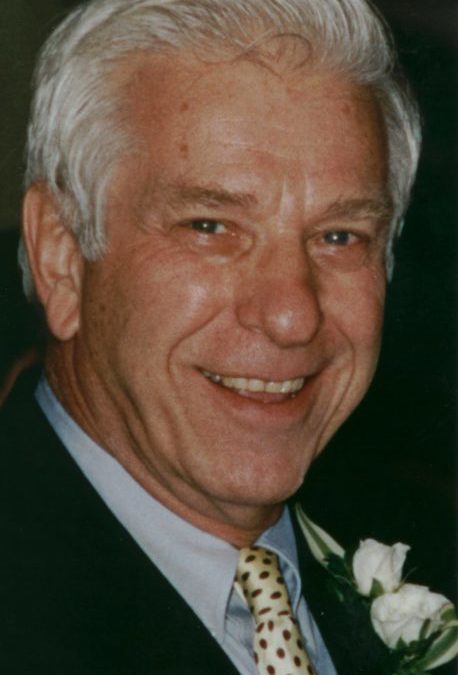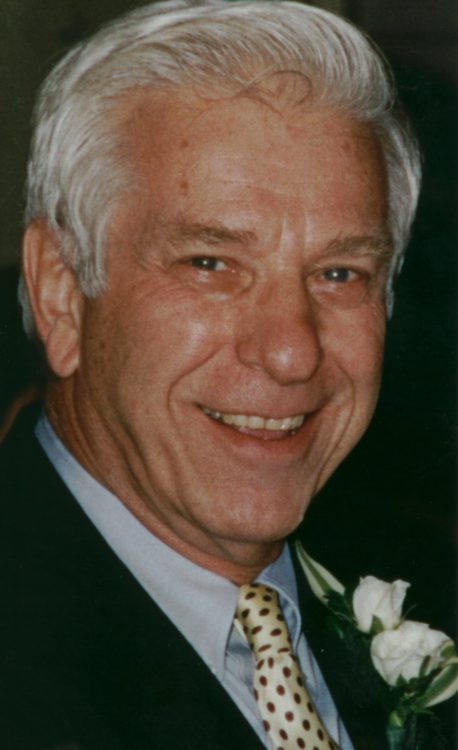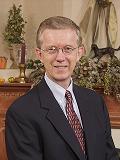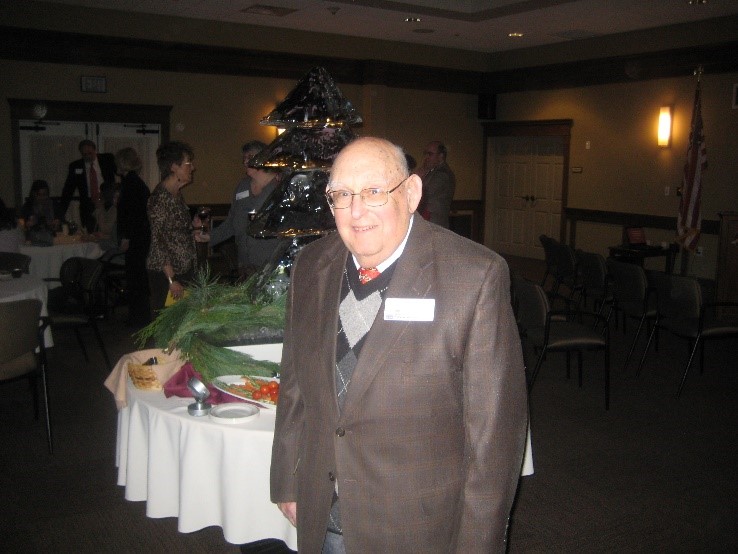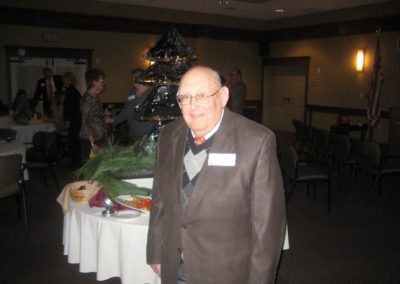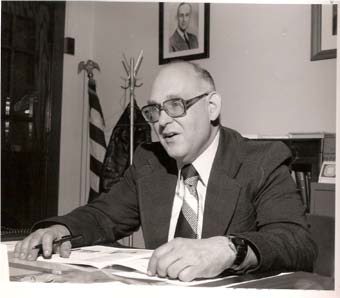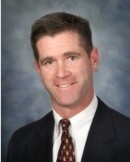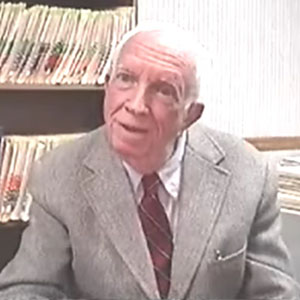
Dr. Evan Calkins
Dr. Evan Calkins founder of the Network in Aging of Western New York, Inc.
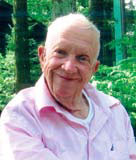
Hard work, high goals and a response to real needs are central themes in the long career of Dr. Evan Calkins. Born in 1920 in Newton, Massachusetts, Dr. Calkins arrived in Buffalo with his wife, seven children and his small menagerie of animals in June 1961 having received excellent training in clinical medicine, teaching research, and administration at Harvard Medical School, Johns Hopkins, and the Massachusetts General Hospital. Dr. Calkins saw that Buffalo had the potential to develop a truly first rate medical center and wanted to be part of the action.
His initial appointment was Chief of Medicine at Buffalo General Hospital and Co-chairman of the Department of Medicine at what was then the University of Buffalo. Subsequently, with the incorporation of UB into a State University system, he was asked to become the first Chairman of the University-wide department. Over the ensuing 16 years, Dr. Calkins and his many colleagues saw the Department move significantly toward the goal he had in mind.
Following relinquishing the chairmanship of the University Department of Medicine in December 1977, Dr. Calkins wasted no time in deciding what to do next. He had already concluded that an important aspect of medicine, with major implications for the future, lay in the field of Geriatrics, then just beginning to emerge on the American healthcare scene. He asked Dr. Naughton if he would support him as Director of a Geriatrics Program here. Dr. Naughton said he would and did. So, too, did Dr. James Nolan, Dr. Calkins successor as Department Chairman. This became the seventh Geriatrics Division in the Country.
At this point, the emergency rooms and in-patient floors of our hospitals were becoming flooded with old people, many of whom had multiple chronic diseases, numerous medications, and protein calorie malnutrition. For these patients, a period of hospitalization is often a prelude to disaster: delirium, loss of ability to walk, decubitus ulcers, and, for many, a downward course leading to death. Optimal care requires the input of numerous disciplines in addition to Medicine, Nursing, Pharmacy, Occupation and Physical Therapy, Dentistry, Social Work, Nutrition, Psychology and Psychiatry and Surgery as necessary. New ways to enhance the effectiveness of teams of specialists of this sort needed to be found. Since a major goal of geriatric care is to prevent hospitalization in the first place, ways were needed to bring interdisciplinary care of this sort into place in community institutions, not only hospitals and nursing homes, but also clinics, day care programs and patient’s homes.
This was the motivation that led Dr. Calkins to seek collaboration with leaders throughout the community committed to enhancing the care of older people. The result was the formation of the Network in Aging. Dr. Calkins was elected President for a two-year term then rotated onto the board for about three years, and then withdrew from active participation. The project took hold and, with vigorous support from a series of leaders who came forth when we needed them – it worked miraculously. The Network has continued to attract increasing membership and is about to celebrate its 30th anniversary.
Dr. Calkins was invited to be a member of the National Advisory Council of the National Institute on Aging and also to serve as consultant to a number of other Universities interested in developing programs in this field. In 1982, he was appointed by Governor Mario Cuomo as a member of the New York State Task Force on Life and Law and served for ten years. The Geriatric Fellowship Program became the largest such program in the country and, by the time Dr. Calkins retired after 12 years on the job, had trained ten percent of all fellowship-trained Geriatricians in the country.
Unfortunately, Dr. Calkins’ immediate successor as head of the Division of Geriatrics proved to be someone who had no interest in interdisciplinary patterns of care or involvement in the community. Federal funding for the Geriatric Education Center and for fellowships in Geriatrics was withdrawn and Beck Hall assigned to other programs.
In 1994, however, the administration of the Buffalo General Hospital sensing the need for Geriatric care and teaching at that institution sought Dr. Calkins’s help in recruiting a Director of the Hospital program. They succeeded in attracting Dr. Bruce Naughton, a graduate of our Medical School who was, at that time, assisting the University of Illinois in developing its geriatric program. Subsequently, Dr. Naughton was appointed Chief of the Geriatrics Division at the Medical School.
A number of the Geriatric Fellows trained in the program over the years have remained in Buffalo. Most of them provide care to patients in nursing homes. Others are meeting the needs of geriatric patients at the Erie County Medical Center. Two physicians, Drs. Robert Stall and Eugene Steinberg practice geriatrics in their private offices and patient’s homes respectively; a third, Dr. June Chang has rejoined the geriatric unit at the Veterans Hospital.
Thus, after 31 years of continued development, with support and encouragement from the Network in the Aging, the Geriatrics Division of the Department of Medicine is continuing to do a responsible job.
Following retirement as Head of the Geriatrics Division, because of age (70), Dr. Calkins was invited to join Healthcare Plan as Senior Physician and consultant in aging, a position he held for five years. For the past 18 years, he has maintained a private practice of Geriatrics and Rheumatology, currently sharing office space in Hamburg, New York with his daughter, Dr. Joan Calkins.
Dr. Calkins is the author or co-author of 86 scientific articles in reviewed medical journals, 42 chapters and four books, the most recent of which is “New Ways to Care for Older People – Building Systems Based on Evidence”, Springer Publishing Company, New York, 1998.
In recognition of Dr. Calkins’ accomplishments in medicine, he has been awarded a number of honors during his career. Some of them include: Geriatric Medicine Academic Award, National Institute on Aging, 1980; Recipient, Private Sector Initiative Award (for founding the Network in Aging of Western New York, Inc.), President Ronald Regan, 1983; Recipient, Dean’s Award, School of Medicine, SUNY Buffalo, 1984; Recipient, Second Annual Milo D. Leavitt Award for Leadership in Geriatric Education, American Geriatrics Society, 1986; Master, American College of Rheumatology, 1987; Master, American College of Physicians, 1988; Recipient, Walter P. Cooke Award, Alumni Association, SUNY at Buffalo, 1988; Membership in the American Society for Clinical Investigation, The American Clinical and Climatological Association and the Association of American Physicians.
Dr. Calkins is listed in the “Who’s Who in America” and “Who’s Who in the World”.

